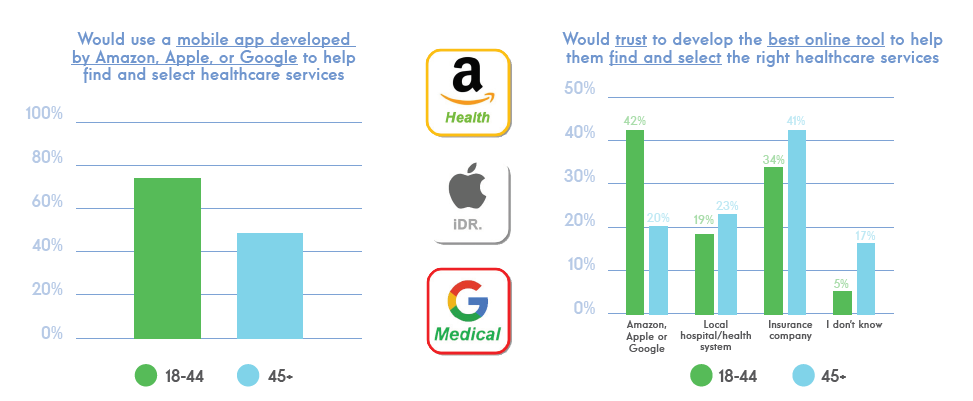Becker’s Healthcare report identified Consumerism as the second most pressing issue facing healthcare executives in 2020— (behind cost transparency). And, I would suggest that the greatest barrier to adoption is that we don’t truly LISTEN to patients, to our customers.
Historically, the industry has assumed that training in the medical profession means knowledge of what is best for consumers. And, yes, medical training means healthcare professionals are best able to sort through treatment protocols. But consumers know best how to engage with and deliver healthcare to them. If the industry listens to their consumers – patients – it will ultimately lead to better outcomes and will ensure that health systems and traditional providers will stay part of consumer healthcare conversations.
Start with the patient FIRST. And LISTEN.
To get this right, it’s important to look outside the healthcare space and learn from technology, retail and other consumer-centric and disruptive industries.
A critical shift in thinking needs to take place: Reframe the conversation from Patients to Customers. Customers have choices. So do patients. Customers can articulate their preferences, needs and pain points. So can patients. Customers have expectations for the companies that they choose to buy from. So do patients.
Part of getting out of the echo chamber is looking at other industries and companies that do this well. Those that put the consumer first and who make it a priority to learn as much as they can about their customers. These companies design delivery systems and products that align with customer needs and expectations.
Because for today’s connected consumer, their best experience anywhere becomes their expectation everywhere. They don’t NEED to wait for the healthcare industry to catch up.
Consumer Expectations
Today, we can get any type of cuisine that strikes our fancy delivered where and when we want it. We can grocery shop from our mobile phone while waiting in the carpool line and have it delivered when walking in the door with the kids. Our music and video offerings are highly personalized and curated. In fact, Uber lets me set preferences for my preferred temperature and level of conversation. Prefer to ride in silence? No problem. Want Chatty Chad? No problem.
And tech companies and disruptors are doing exactly that. My son recently aged out of my health insurance and found his way to 98point6. When I asked him about it, he didn’t talk about feeling better or the provider answering his questions or solving his medical challenge. He told me how cool the experience was. How intuitive the interface was.
In an era where 28% of people under the age of 36 don’t have a primary care provider, we need to pay attention. And, it’s not just convenience and ease of use. Digital natives trust innovative tech companies to help with finding and selecting healthcare services. But so,do those over age 45. Digital natives (18-44) trust Amazon, Apple or Google twice as much as they trust the local hospital/health system. And for those over age 45, we are at parity with Amazon, Apple or Google.
I acknowledge the discussions and concerns that this focus on consumerism may comprise our high-quality healthcare standards and water down the value of healthcare. But I would suggest, that if patients are met where they are and create more engaging experiences, there will be an increased use of health services, making it easier for patients to achieve their goals. Ultimately leading to better outcomes.
Shoot us an email to generate iterative insights to inform your consumerism strategy.
Are you eager to stay ahead of the curve in your industry? Sign up for our monthly insights email and gain exclusive access to valuable market research, industry trends, and actionable recommendations delivered directly to your inbox.
Topics from this blog: Healthcare